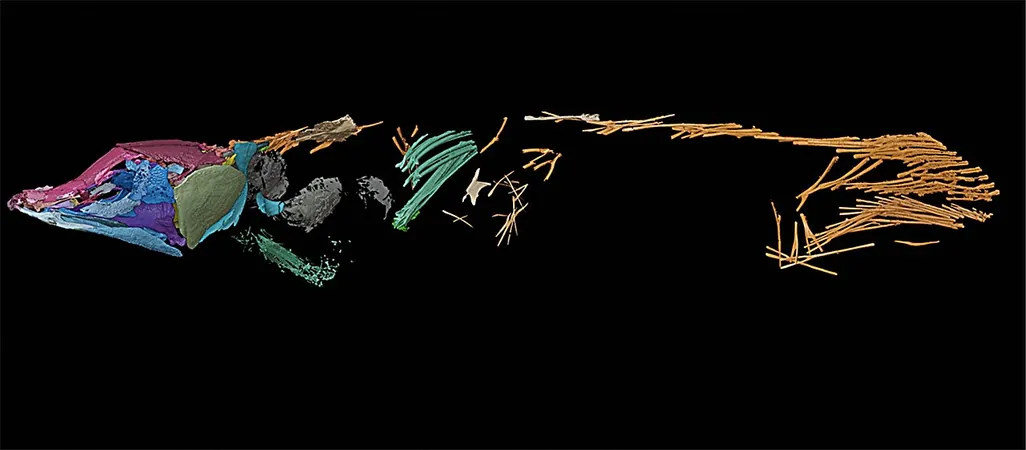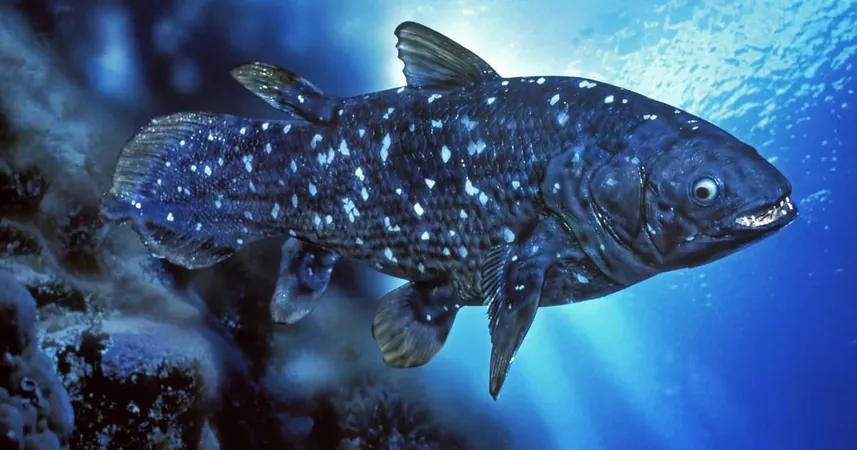
Groundbreaking Discovery: New Coelacanth Species Unveiled Thanks to Particle Accelerator!
2024-11-12
Author: Li
Introduction
In an extraordinary revelation for paleontology, a team from the Natural History Museum (MHNG) and the University of Geneva (UNIGE) has identified a new species of coelacanth, a remarkable fish that has existed for over 400 million years. This discovery is unprecedented in its level of detail, thanks in no small part to advanced technology at the European Synchrotron Radiation Facility (ESRF) in Grenoble, France.
The Coelacanth: A Living Fossil
Coelacanths, often dubbed "living fossils," are primarily known from two existing species found off the East African coast and in Indonesia. The new findings shed light on coelacanths from the Middle Triassic period, approximately 240 million years ago. These fascinating fish, which resemble ancient relatives, were discovered preserved within clay nodules in Lorraine, France.
Advanced Imaging Techniques
Utilizing the ESRF, researchers employed cutting-edge synchrotron light technology that produces high-resolution X-ray imagery, enabling them to analyze the fine details of these ancient specimens like never before. Through painstaking digital reconstruction, the team generated intricate 3D models of the coelacanth skeletons, revealing exceptional preservation that included previously unobserved structural details.
The New Species: Graulia branchiodonta
Among the specimens identified, a new species has been named Graulia branchiodonta, drawing inspiration from both regional folklore and the fish’s striking anatomical features, especially its formidable gill teeth. These juvenile individuals exhibited pronounced sensory canals, suggesting they lived more actively than their sluggish modern-day counterparts, Latimeria.
Unique Adaptations
Interestingly, Graulia branchiodonta possessed a prominent gas bladder. Researchers are currently investigating its potential roles, which might range from buoyancy to respiratory and auditory functions, hinting at the creature's unique adaptations in its ancient ecosystem.
Future Research Directions
Continuing research at the Natural History Museum in Geneva aims to explore further Triassic coelacanth fossils discovered globally, as scientists are keen to delve into both their morphological diversity and genetic makeup through genome comparisons with contemporary vertebrates. This study could unlock additional mysteries of evolution and biodiversity, paving the way for a deeper understanding of life on Earth during a period far removed from our own.
Conclusion
Stay tuned as this evolutionary enigma continues to unfold—new insights surrounding these ancient fish could challenge everything we thought we knew about marine life’s historical landscape!





 Brasil (PT)
Brasil (PT)
 Canada (EN)
Canada (EN)
 Chile (ES)
Chile (ES)
 España (ES)
España (ES)
 France (FR)
France (FR)
 Hong Kong (EN)
Hong Kong (EN)
 Italia (IT)
Italia (IT)
 日本 (JA)
日本 (JA)
 Magyarország (HU)
Magyarország (HU)
 Norge (NO)
Norge (NO)
 Polska (PL)
Polska (PL)
 Schweiz (DE)
Schweiz (DE)
 Singapore (EN)
Singapore (EN)
 Sverige (SV)
Sverige (SV)
 Suomi (FI)
Suomi (FI)
 Türkiye (TR)
Türkiye (TR)